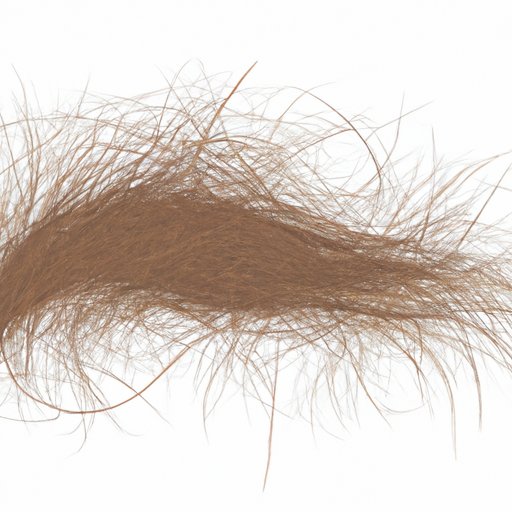
Introduction
Hair loss is a common problem faced by both men and women. Losing hair daily can be concerning, but it is essential to navigate through the causes and treatment options with a factual and positive outlook. In this article, we will explore the science of hair loss, the normal hair loss range, hair loss causes, prevention techniques, and acceptance.
The Science of Hair Loss: Understanding the Natural Shedding Process
Hair growth is a cyclical process with three phases: the anagen phase where the hair grows, the catagen phase, where it pauses the growth, and the telogen phase, where it falls out naturally. During this natural shedding process, hairs can be lost daily, but regrow quickly for most people.
Many factors contribute to hair growth, including genetics, age, hormones, nutrition, and overall health. Hormonal changes that occur during puberty, pregnancy, and menopause can cause hair loss. Stress and unhealthy habits such as smoking, poor nutrition, and lack of sleep are also factors contributing to hair loss.
Shedding Light on Hair Loss: How Much is Normal?
The average person loses 50 to 100 hairs a day, which is within the normal hair loss range. However, the amount of hair loss can vary depending on environmental and genetic factors. It can also depend on the styling tools used and chemicals applied.
It is essential to differentiate between hair shedding and hair breakage when analyzing daily hair loss. Shedding occurs when hairs fall out naturally, whereas breakage occurs when hairs break off due to trauma or chemicals.
More than Meets the Brush: Exploring Hair Loss Causes and Treatments
There are various reasons why a person may experience hair loss, including genetic factors, medical conditions, and environmental factors. Hereditary baldness, also known as androgenetic alopecia, is the most common type of hair loss and can occur due to the genes inherited from either parent.
Medical conditions that can cause hair loss include autoimmune diseases, thyroid disorders, iron deficiency anemia, and scalp infections, among others. Environmental factors include exposure to chemicals, sunlight, and pollutants that can cause hair damage.
There are several treatments available for hair loss, ranging from hair transplant surgery to medications such as minoxidil and finasteride. Consultation with healthcare providers can determine the appropriate treatment, depending on the type, severity, and causes of hair loss.
Counting Strands: How to Monitor Hair Loss for Better Health
Tracking hair loss patterns can help determine if the amount of hair loss is concerning and if it is time to seek medical attention. Scalp examination and hair density measurements are tools used to monitor hair loss.
Photographs of the hair and scalp can help track changes in hair loss patterns over time. It is also essential to note any changes in hair texture, thickness, and overall hair health.
When to Worry About Hair Loss: A Quick Guide
Excessive hair loss can be a sign of underlying health issues and should be monitored carefully. Signs of excessive hair loss include significant clumps of hair falling out or thinning out over a short period.
Medical attention should be sought if hair loss is accompanied by inflammation or scaling around the hair follicles or if there is sudden hair loss due to chemotherapy or radiation therapy.
Hair Today, Gone Tomorrow: The Best Hair Loss Prevention Techniques
There are several preventive measures that can reduce hair loss, including diet and lifestyle changes, hair care tips, and taking supplements and vitamins for hair growth.
A nutritious diet can nourish the hair, and it is important to consume enough protein, iron, and vitamins. Drinking plenty of water, getting enough sleep, and reducing stress levels can promote overall hair health.
Hair care tips include avoiding chemical treatments, tight hairstyles, and excessive heat. It is essential to use gentle hair products and choose hair tools with coated ceramic plates and temperature control to prevent hair damage.
Accepting Hair Loss: A Guide to Embracing Your Natural Beauty
Finally, it is important to embrace natural hair loss and promote self-acceptance. Coping mechanisms for hair loss can be focusing on the positive aspects of oneself, seeking social support, and seeking professional help as needed.
Various hair styling techniques can improve the appearance of thinning hair, including changing hairstyles, using hair extensions, and wigs.
Conclusion
In conclusion, hair loss is a natural part of the hair growth cycle and can be influenced by various genetic, environmental, and lifestyle factors. Maintaining a healthy lifestyle, monitoring hair loss, and seeking appropriate help can help reduce hair loss and promote overall hair health.
With self-acceptance and improved hair care, hair loss can be managed without compromising one’s self-worth or appearance.





